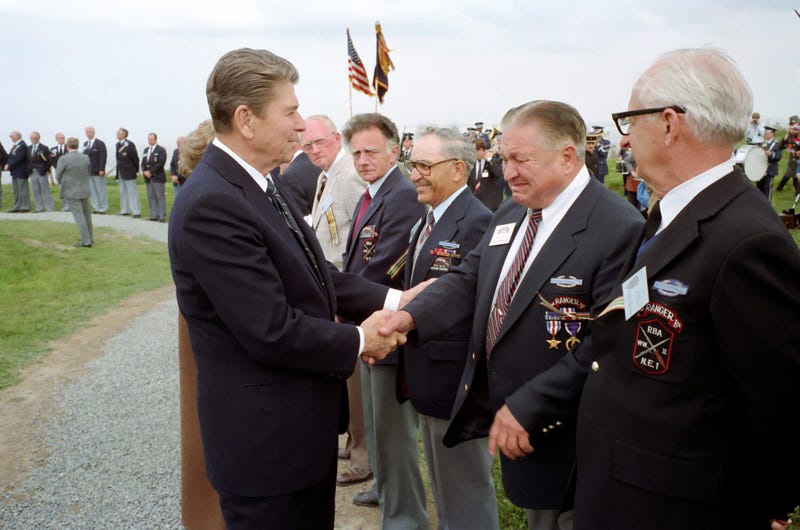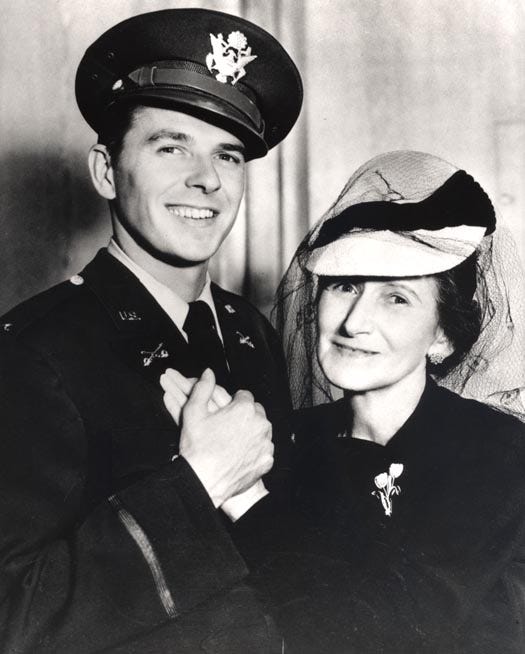
Like many of the big name celebrities of his era, Ronald Reagan served during World War II, but his story of service was a bit different than his contemporaries. While Reagan was best known as a leading man in Hollywood when the US entered the war, he'd already been a soldier for years at that point, having joined the Army reserves in 1937.
Serving the country was something of the utmost importance to the future president according to his son Michael Reagan, president of The Reagan Legacy Foundation. In fact, he wanted to join so badly he wasn't going to let anything stop him, not even a physical limitation like his poor eyesight.
WATCH: 75th Ranger Regiment climb the cliffs of Pointe du Hoc
"He knew he would have to pass an eye exam," Michael said during an appearance on the Eye on Veterans radio show. "So he went out and he memorized all the eye exam charts, and when they gave him the eye exam they asked him to read line 2 or 3 and he had it memorized so he just told him what it was and they said 'you're in!'"

While he was able to work around that test, his poor sight would eventually be discovered, and keep him from serving overseas. Instead, during the war, Reagan made over 300 films of various types for the Army.
While he couldn't deploy, Reagan always had an affinity for those who did. That's a big part of why The Reagan Legacy Foundation wanted to find a way to honor the men who fought and died during the D-Day invasion and in the European theater following the invasion. Michael and his wife Colleen came up with an idea while visiting the Airborne Museum at Sainte-Mère-Église, where the 82nd and 101st Airborne troops met up after dropping in behind enemy lines. They imagined personalized bricks, with the names of those who fought, creating a "walkway to victory" on the museum's grounds.
'Woo-hoo!' At 97, D-Day veteran parachutes into Normandy
"We partnered with the Airborne Museum," Reagan said. "They thought it was a great idea for the walkways going to the different buildings, to be able to actually have the names of those who fought in the second World War in the European theater."
The project began in April 2018, and will continue for the foreseeable future according to Reagan, with the plan being to move on to other locations once all of the walkways at the Airborne Museum are complete. He says those who donate through the Walkway To Victory website can personalize a brick with the money going towards creating the bricks and two good causes: funding the the Airborne Museum, as well as The Reagan Legacy Foundation scholarships that are available to the crew and family members of the USS Ronald Reagan (CVN-76).
You can hear the full interview with Michael Reagan below.
